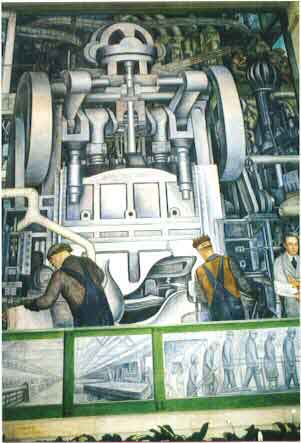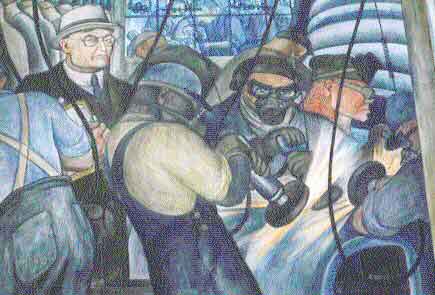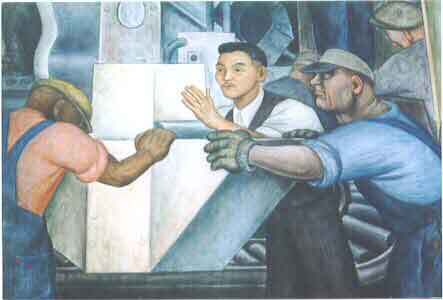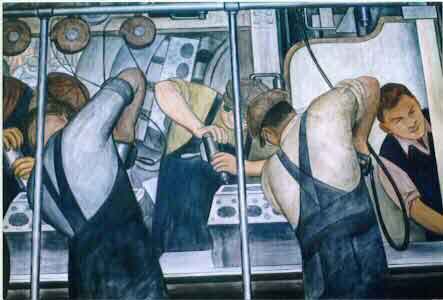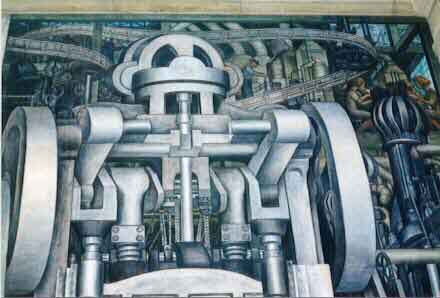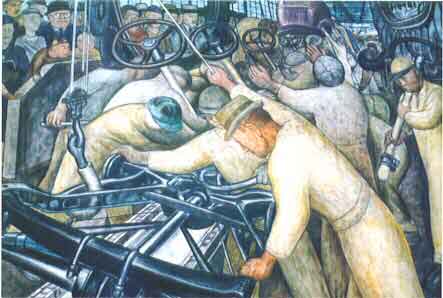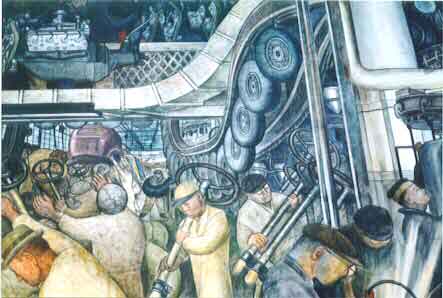
| Art
Gallery: Diego Rivera Murals |
||
The
Detroit Murals of Diego Rivera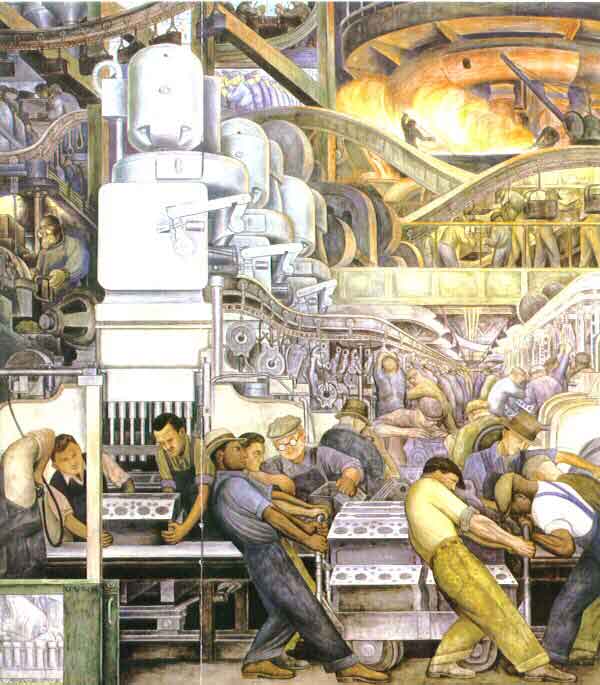
People are fascinated with technology. Its look, feel, and power have fired the imagination of scientist, artists and common men and women from every walk of life. I worked in many industrial jobs; oil refineries in California, a large cigarette factory in Kentucky, and finally U.S. Steel in south Chicago. In these places I was struck by the complex patterns of pipes, the immensity of the machines, the repetitive precision of work and the enormous feeling of power emanating from the surreal surroundings. Images of machines and technology became an important part of artistic visions in the 20th century. Some artists were attracted to the complexity of patterns and shapes, others saw humanity oppressed by machines, still others saw a future utopia developing before our eyes. Diego Rivera’s murals of Henry Ford’s River Rouge factory in Detroit is perhaps the greatest work of art depicting technology in the 20th century. The Detroit Industry mural is considered one of the 20th century’s finest achievements in monumental art. The murals are a tribute to Detroit industry and labor in the 1930s. In one of the few major modern works that successfully incorporates representation of functional machines, Rivera transformed their physical power and practical design into dynamic images of sensual forms.
Rivera had long been fascinated by machines and believed that engineers were America’s greatest artists. As a child he loved to draw locomotives and imaginary mechanical inventions. His love of machines combined with his idealist Marxist view in which the hope for society rested on the use of technology to free the working class from menial labor and provide for the material needs of all. In the Detroit Industry cycle the factory workers are not freed from menial and strenuous work. Yet, while dominated by the machines, the workers are shown in harmony with them; their dance-like poses are part of a mechanized ritual. When the murals were opened to the public a great controversy erupted. Members of the press, clergy and City Council objected to Rivera’s Marxist view and didn’t think industry was a subject for art. There was a demand to whitewash the murals. But Rivera also had supporters, including Edsel Ford and the People’s Museum Association, which collected 4,000 signatures to defend the murals. The paintings were saved, but Rivera’s work at Rockefeller Center in New York were destroyed because they included a portrait of Lenin and were considered too Revolutionary. I hope you enjoy looking at The Detroit Murals of Diego Rivera. Jerry Harris Click on the images for a larger view: Images Courtesy of Jerry Harris
|
||
WELCOME!
You are visitor number |
Designed
by ByteSized Productions © 2003-2006
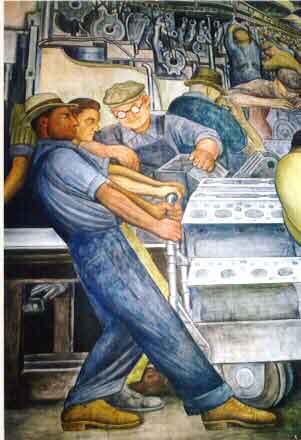 The
murals are a synthesis of the artist’s impressions during
his studies of the Ford family’s industrial plant, and especially
of what he saw at the River Rouge complex. A few months previously,
the first new Ford Model V-8 had come off the production lines,
and Rivera depicted its production in these paintings. At River
Rouge he became acquainted with the routines of factory work and
the grave problems that had been caused by the anti-union policies
of the period, and observed the miserable condition of the working
class that had been brought about by the world economic depression.
Yet the artist had a love of industrial design and admiration for
engineering with his Marxist philosophical views about industry’s
positive and negative contributions to society.
The
murals are a synthesis of the artist’s impressions during
his studies of the Ford family’s industrial plant, and especially
of what he saw at the River Rouge complex. A few months previously,
the first new Ford Model V-8 had come off the production lines,
and Rivera depicted its production in these paintings. At River
Rouge he became acquainted with the routines of factory work and
the grave problems that had been caused by the anti-union policies
of the period, and observed the miserable condition of the working
class that had been brought about by the world economic depression.
Yet the artist had a love of industrial design and admiration for
engineering with his Marxist philosophical views about industry’s
positive and negative contributions to society. 